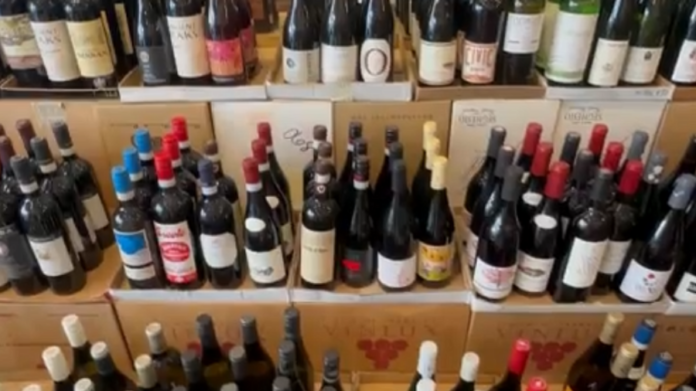As trade tensions between the U.S. and Europe escalate, California’s iconic wine industry is watching closely, wary of the potential fallout from proposed tariffs. The industry, already grappling with declining global wine consumption, rising production costs, and unpredictable weather, now faces the added challenge of navigating a complex trade landscape.
The Trumps administration’s recent proposal to impose a 200% tariff on European wines, Champagne, and spirits—a response to Europe’s planned 50% tariff on American whiskey—has sparked concern among many in the wine sector. The Wine Institute, a leading advocate for California wineries, warned that such tariffs could harm the entire wine supply chain, from farmers and vintners to distributors and retailers.
“Tariffs will hurt the broader wine sector, including the millions of people working across the extended wine supply chain,” the Wine Institute stated.
However, not all in the industry view the tariffs as entirely negative. Some California winegrape growers see a potential silver lining, hoping that the measures could level the playing field for domestic producers.
Craig Ledbetter, a partner at Vino Farms in Lodi, Calif., has been growing winegrapes for four decades. He points out that farming costs in California are significantly higher than in countries like Chile and Australia, and European grapegrowers benefit from substantial government support. Ledbetter, who left thousands of tons of winegrapes unharvested two years ago due to weak demand, has shifted some of his land to more profitable crops like pistachios.
“I think it’s all going to work itself out, and I think it will equal our playing field a little bit,” Ledbetter said. “As a farmer, I have to look at it through an optimistic lens.”
Despite this optimism, many industry experts warn that tariffs could have far-reaching consequences. U.S.-based importers of European wines are likely to face higher costs, and the price of essential supplies like wine barrels and glass bottles could rise. Additionally, retaliatory tariffs from Europe could cripple U.S. wine exports, which are already struggling under a 25% import tax in Canada—a key market for California wines.
Jessie Vallery, director of marketing and operations for Alexander Valley Winegrowers in Sonoma County, noted that Canadian buyers have already pulled U.S. wines from the market. “It’s creating a lot of chaos and uncertainty,” she said.
California, which produces about 80% of U.S. wine, shipped approximately 24 million cases overseas in 2023, according to the Wine Institute. Wine exports are a critical agricultural commodity for the state, valued at $1.3 billion in 2022, trailing only almonds, dairy, and pistachios.
The industry is already under immense pressure from shifting consumer preferences, rising farming costs, and climate-related challenges like wildfire smoke and drought. In 2023, U.S. per capita wine consumption hit its lowest level in over a decade.
Stuart Spencer, executive director of the Lodi Winegrape Commission, said the uncertainty surrounding tariffs has made it difficult to promote California wines abroad. “It has created a lot of hesitancy, which is leading to canceled sales,” he said.
Still, some see short-term opportunities. Rob McMillan, executive vice president at Silicon Valley Bank, suggested that higher tariffs on European wines could make California wines more affordable by comparison, potentially opening new markets.
Keith Saarloos, a Santa Barbara winegrower who sells directly to consumers, remains hopeful. “I would love every single person to focus all their attention on new wines,” he said. “I have to remain optimistic.”
As the trade dispute unfolds, California’s wine industry is bracing for impact while holding onto hope that the challenges may ultimately lead to a more balanced global market.
For more business and economic updates, visit DC Brief.


